I have Blog model below. *I use Django 3.2.16 and PostgreSQL:
# "store/models.py"
from django.db import models
class Blog(models.Model):
post = models.TextField()
def __str__(self):
return self.post
Then, store_blog table has 2 rows below:
store_blog table:
| id | post |
|---|---|
| 1 | Python is popular and simple. |
| 2 | Java is popular and complex. |
Then, when running the filter() code using & or Q() and & or using and or Q() and and in test() view as shown below:
# "store/views.py"
from .models import Blog
from django.db.models import Q
from django.http import HttpResponse
def test(request):
# With "&"
# ↓ Here
qs = Blog.objects.filter(post__contains="popular") & \
Blog.objects.filter(post__contains="simple")
print(qs)
# With "Q()" and "&"
# ↓ Here # ↓ Here
qs = Blog.objects.filter(Q(post__contains="popular") &
Q(post__contains="simple"))
print(qs) # ↑ Here
# With "and"
# ↓ Here
qs = Blog.objects.filter(post__contains="popular") and \
Blog.objects.filter(post__contains="simple")
print(qs)
# With "Q()" and "and"
# ↓ Here # ↓ Here
qs = Blog.objects.filter(Q(post__contains="popular") and
Q(post__contains="simple"))
print(qs) # ↑ Here
return HttpResponse("Test")
I got the same result below:
<QuerySet [<Blog: Python is popular and simple.>]> # With "&"
<QuerySet [<Blog: Python is popular and simple.>]> # With "Q()" and "&"
<QuerySet [<Blog: Python is popular and simple.>]> # With "and"
<QuerySet [<Blog: Python is popular and simple.>]> # With "Q()" and "and"
[22/Dec/2022 16:04:45] "GET /store/test/ HTTP/1.1" 200 9
And, when running the filter() code using | or Q() and | or using or or Q() and or in test() view as shown below:
# "store/views.py"
from .models import Blog
from django.db.models import Q
from django.http import HttpResponse
def test(request):
# With "|"
# ↓ Here
qs = Blog.objects.filter(post__contains="popular") | \
Blog.objects.filter(post__contains="simple")
print(qs)
# With "Q()" and "|"
# ↓ Here # ↓ Here
qs = Blog.objects.filter(Q(post__contains="popular") |
Q(post__contains="simple"))
print(qs) # ↑ Here
# With "or"
# ↓ Here
qs = Blog.objects.filter(post__contains="popular") or \
Blog.objects.filter(post__contains="simple")
print(qs)
# With "Q()" and "or"
# ↓ Here # ↓ Here
qs = Blog.objects.filter(Q(post__contains="popular") or
Q(post__contains="simple"))
print(qs) # ↑ Here
return HttpResponse("Test")
I got the same result below:
<QuerySet [<Blog: Python is popular and simple.>, <Blog: Java is popular and complex.>]> # With "|"
<QuerySet [<Blog: Python is popular and simple.>, <Blog: Java is popular and complex.>]> # With "Q()" and "|"
<QuerySet [<Blog: Python is popular and simple.>, <Blog: Java is popular and complex.>]> # With "or"
<QuerySet [<Blog: Python is popular and simple.>, <Blog: Java is popular and complex.>]> # With "Q()" and "or"
[22/Dec/2022 16:20:27] "GET /store/test/ HTTP/1.1" 200 9
So, are there any differences between & and and and | and or for AND and OR operators in Django?

